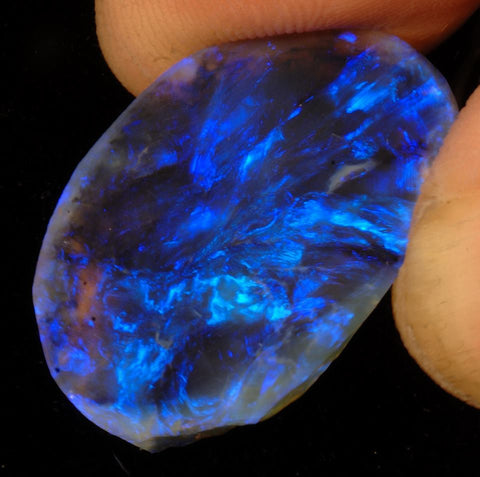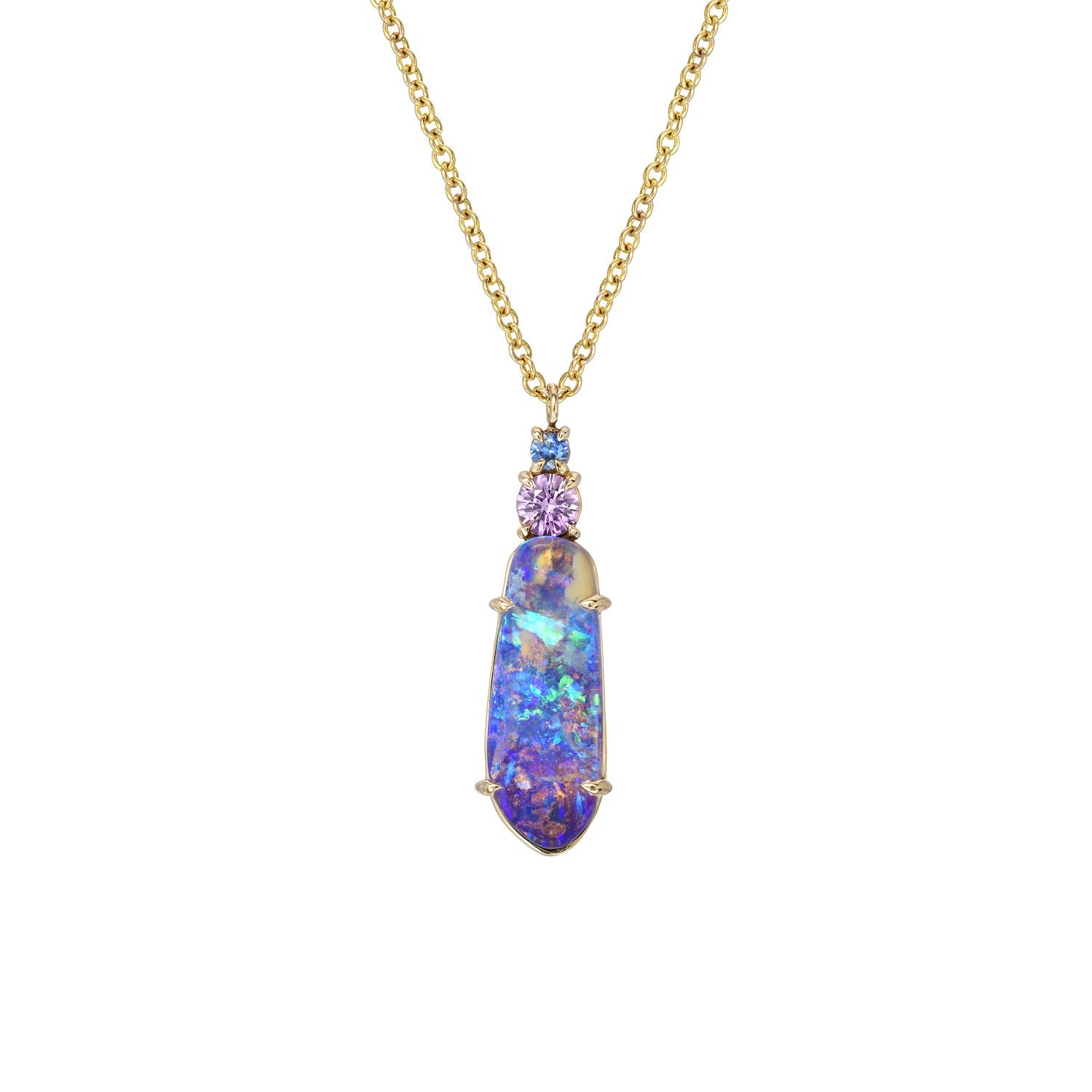
Facts and Myths About Opals
luis gomezShare
Opals aren’t exempt from the onslaught of fake news the rest of the world experiences. The magnificent gemstone has to deal with a wide variety of often outrageous, sometimes defamatory, and oftentimes ill-informed news reports. In this article, we’re going to clarify some of those myths, fables, and bogus claims routinely made about Opals. Fraudulent, invented or purely errant stories that in many cases might inform a person’s decision to invest in an Opal. From how fragile Opals actually are, all the way to how they react to water. Come with us as we chase down Opal facts while dismissing some of the myths surrounding the special stone.
Opal Facts and Myth
Myth: The only good Opals are those that come from Australia.
Fact: Yes, 95% of Opal production in the world comes from Australia. That koala paradise, full of pristine beaches and all types of cute little marsupials has a rather active and heavily enforced - and protected - Opal mining industry. Some of the most expensive Opals in the world, some of its most famous, are black Opals excavated from its Opal mining fields. Nevertheless, that doesn’t mean that the remaining 5% unearthed everywhere else - like Ethiopia, Brazil, Mexico, and Nevada - are simply bargain-basement Opals or of lesser quality. Some Opals from these other regions are extremely sought after and can be found in the highest quality.
Myth: Opals need to be soaked in water occasionally to prevent cracking.
Fact: Most Opals - particularly Australian Opals - are non-porous — this means they don’t soak up water, oil, or anything else. They already have a percentage of water within their body-makeup, something they acquired during their formation, and they do not absorb more. Dunking your Opal in water will do absolutely nothing to it. But why the myth? For three reasons.
One: Unlike most other Opals, Ethiopian Opals are porous — they can soak a certain amount of water. This doesn’t prevent them from cracking, but it can change their color, which does not always return upon drying them out.
Two: Wetting an already cracked stone can hide, temporarily mind you, the fault. It will not fix it, nor will it prevent further cracks from appearing — water will simply mask the blemish.
Three: When inspecting rough opal, it has not yet had its final polish - a step which allows its colorful fire to show. Instead, it appears a bit dull and dusty looking. For this reason, dealers selling Opal rough will often display it in water - which lessens this dusty appearance - so that the buyer can see its true colors shine through.
Myth: Opals need to be rubbed with oil or glycerin to prevent cracking.
Fact: Once more, Opals are non-porous. Moistening your stone in oil, or glycerin will do nothing more than making your gemstone a bit shinier and a lot more oily. This does not increase the life of your Opal. And in the case of Ethiopian Opals, as previously mentioned, they are porous, so they may actually absorb the material applied to their surface which could have a permanent effect on their appearance.
Myth: Opals are bad luck charms.
Fact: For ages Opals were considered the “Mother of Gemstones.” Why? They were extremely rare and continue to be. They were used in many religious rituals in the east to ward off spirits. During the Middle Ages, “doctors'' would employ Opals in order to “cure” certain illnesses. They were even used by Nordic women, laced throughout their hair, to combat balding and gray hair. Up until the 19th century Opals were some of the most sought out gemstones in existence, they were even more popular and expensive than diamonds. So, what happened in the 19th century? Sir Walter Scott published a rather famous novel titled, “Anne of Geierstein.” In that book, the main protagonist, Anne, wears a magical opal that is touched by holy water. She instantly falls ill, and the next morning is gone, with a pile of ash in her place. The impact of this novel, upon the reputation of Opals at that time, was devastating, and its effects still linger in the form of myth today.

Anne of Geierstein
Myth: the only Opals worth any money are those that are completely black.
Fact: Black Opals are the Rolls-Royce of Opals, there are no two ways about it. Still, there are a couple of misconceptions about the idea that the only Opals worth investing in are black. First of all, completely black Opals are next to worthless. Why? A black Opal, that’s just a Stygian void, doesn’t display a myriad of rainbow colors. That sort of empty abyss doesn’t act as a visual lure. Black Opals are simply those that have a comparatively dark body type when set side by side to the milky tones of white Opals. They are not completely black. Also, white Opals are extremely valuable — just not as sought after as Black Opals. So it’s absolutely possible for a very beautiful white crystal Opal to be more valuable than a modest black Opal.

Example of a Black Opal. Image curtesy of Wood's Stoneworks and Photo Factory on Flickr
Myth: Opals are extremely fragile and will break rather easily.
Fact: Yes and No — it’s true that Opals, in general, are more fragile than a number of other gemstones. It’s important to note that some of these other gemstones - like diamonds - are considered to be some of the hardest and most resistant materials in the world. They are known for their strength. So, by comparison, everything is fragile when that’s that benchmark. Nonetheless, Opals are a bit more fragile and that’s important to bear in mind. They have the same hardness as turquoise and glass, good quality glass. When wearing Opal jewelry, you’d want to avoid heavy manual labor or any activity that might lead to an impact with a hard surface. Treat it like you would your smart-watch or cellphone. It’s also important to highlight that boulder Opals are generally a bit sturdier and often more resistant to damage than other types.

Hidden Cove Sapphire and Opal Necklace - with Boulder Opal center
Myth: Don’t get your Opal wet because water will damage it.
Fact: Most Opals are made with a certain amount of water. Immersing a solid Opal in water will do absolutely nothing to it. Why do we say solid Opals instead of just Opals? Because Opal Doublets and Triplets - which are essentially layers of precious Opal and potch (non-precious or common Opal) glued together - are at risk of water damage. What ends up being injured by the H2O isn’t actually the gemstone but the plaster/glue used to join the Opal pieces together — prolonged exposure to water may cause the glue to deteriorate or make your stone appear cloudy. Keep Opal doublet and triplet jewelry out of water.
Myth: Taking your Opal on a plane or a mountain will cause it to crack.
Fact: High altitudes alone should do next to nothing to your Opal, particularly a stone that’s in good condition. However rapid changes in extreme temperatures can cause cracking. Not just rapid shifts in temperature, but also extreme heat or excessively low humidity - these are conditions best avoided.
And if you’ve heard the rumors that here at NXIN Jewelry we have a minor Opal obsession, it’s not just a myth - we can confirm that as fact. We adore these beautiful stones and invite you to explore what we have in store.



